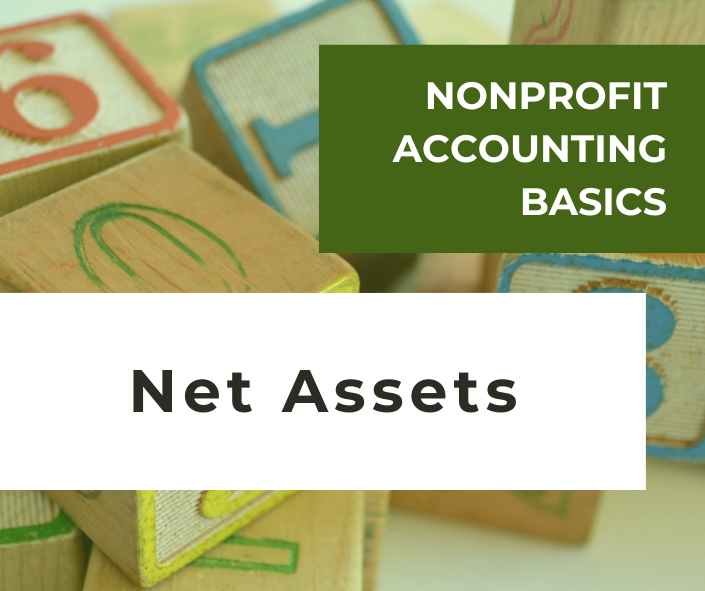Nonprofit leaders wear many hats – fundraiser, program manager, team coordinator, administrator…the list goes on. But it’s often the “accountant” hat that causes the most discomfort. Whether you’re a director, volunteer, or board member, you probably didn’t get into nonprofit work for the pleasure of reconciling bank accounts.
In this series, we’ll explore some of the basic accounting concepts that every nonprofit professional should know.
Net Assets
Net assets are a key measurement of your organization’s financial value. In the broadest sense, your financial viability boils down to three things:
What do you own?
What do you owe?
What are you worth?
What Do You Own?
Assets are things your nonprofit owns. This includes the cash in your bank account, the furniture and equipment in your office, and the real estate your organization owns. It also includes pledged donations and unpaid invoices you’ve issued to clients or customers, which is known as accounts receivable.
Accounts Receivable = Income you expect to receive in the future; money owed to your organization.
Stocks, investments, inventory, patents, and trademarks are also common assets.
Not everything you purchase is an asset. You might buy copy paper, donuts, and throw pillows, but those are not assets. However, a copy machine, refrigerator, or sofa might be considered an asset. The determination usually comes down to the cost and useful life of the item. Paper gets used up, donuts get eaten, and throw pillows are inexpensive. But printers, refrigerators, and sofas have a higher cost of purchase and may be used for many years before being re-sold or discarded.
For consistency, your nonprofit should set a capitalization threshold – a specific dollar amount at which a purchased item is considered an asset. $5,000 is common capitalization threshold for nonprofit organizations.
Some assets also depreciate or lose value over time. That 2007 Macbook Pro might have been a high-value computer when you bought it, but today you’d be hard pressed to re-sell it for more than pocket change. In accounting terms, depreciation is a method used to reduce the value of an asset over a period of time.
What Do You Owe?
Liabilities are things your nonprofit owes. Unpaid bills – known as accounts payable – are a liability.
Accounts Payable = Payments you expect to make in the future; money your organization owes to others.
Credit card balances, loans, mortgages, lines of credit, unpaid payroll and tax withholdings are also liabilities.
Liabilities can be short-term or long-term. Short-term or “current” liabilities are typically paid off within a year or less, like your electric bill or payroll taxes. Long-term liabilities like a mortgage or bank loan will be paid off over several years.
What Are You Worth?
Add up all your assets. Now, subtract your liabilities. What you’re left with are your net assets.
Assets - Liabilities = Net Assets
When you take everything that you own and then subtract everything that you owe, you will get a good sense of what your organization is worth financially.
Net assets reflect the wealth that your organization has accumulated over time. In the for-profit world, this leftover balance would go to the shareholders of a company. But since nonprofits do not have shareholders, this balance gets reinvested in the organization’s mission instead.
Unlike for-profit companies, nonprofits also have to categorize their net assets in two different ways: net assets with restrictions and net assets without restrictions.
With Restrictions = Specific donor stipulations or conditions that limit how an asset can be used or spent.
Without Restrictions = No donor stipulations or conditions; can be used or spent however the organization deems most appropriate.
Since many donations come with restrictions on how that money can be spent, this adds an extra layer of complexity to nonprofit accounting.
You can find your organization’s assets, liabilities, and net assets on your Statement of Financial Position. You may also see a line item on your Statement of Activities called “Change in Net Assets.” This is simply the difference between your income and expenses for a certain period of time - what a for-profit business might call “profit.”
Need more help? At Altruic Advisors, our nonprofit accountants have helped more than 500 organizations across the country with outsourced accounting, Form 990 preparation, and nonprofit audit services. Together, we can help you create good.





